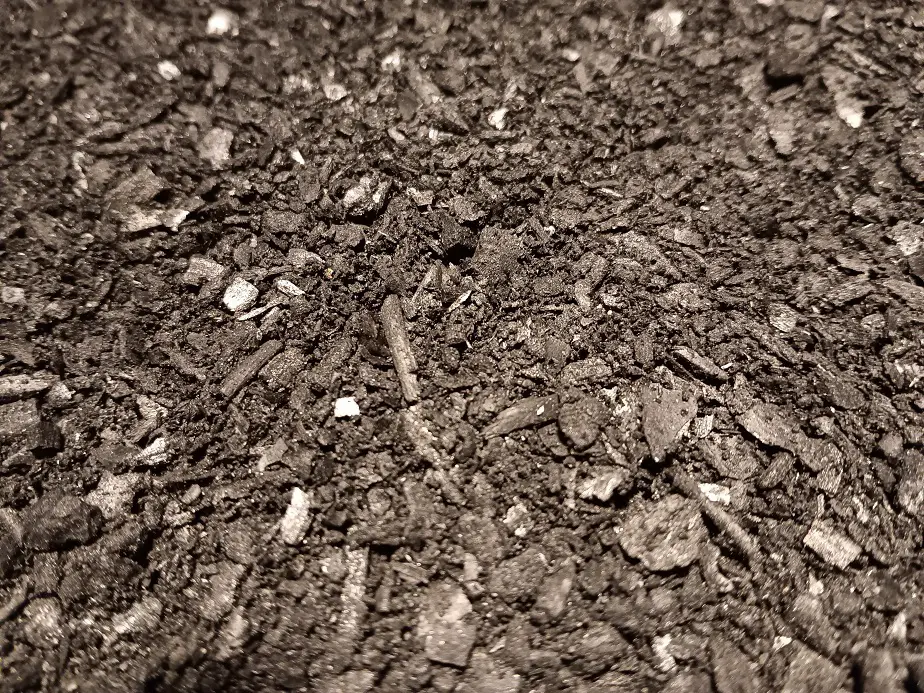I make biochar for use in garden and potting soil, and I’ve learned a few tricks to using it well.
Biochar can be used at rates up to 70 percent in potting soil mixes, but it’s commonly between 5 and 10 percent. The rate you use depends on the plants you grow, the type of biochar you have, and the actions your soil mix needs. The granulation and composition of your char needs to be carefully considered before adding to potting soil. Biochar can replace perlite, vermiculite, and peat moss in potting soil and it has been used as a sole growing medium.
There are a lot of factors here but I can boil it all down to simple principles.
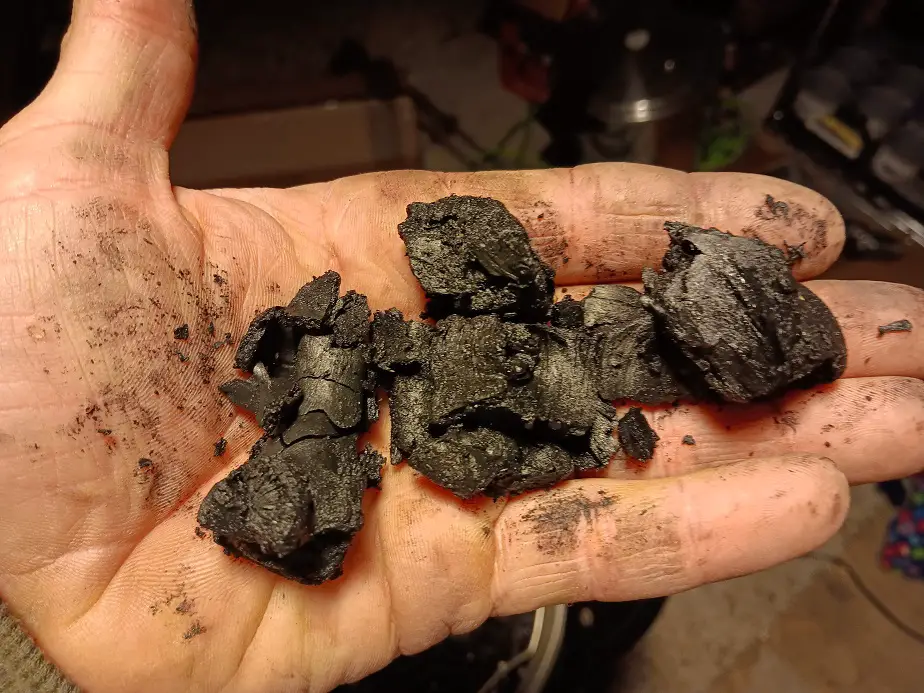
Using Biochar in Potting Soil
Biochar is commonly thought of as a soil sponge. Its properties of absorbing water and slightly increasing the microbial soil life are well known. Most of the time someone adds biochar to their potting mixes, it’s either because they want to increase the water-holding capacity or because someone told them it was a good idea.
But, it may or may not have been needed, and it may not have been the right volume. You can use biochar just for its carbon bonding and water-holding capacities. It will help hold both water and plant nutrients in the soil in a way that plants can get to them. But it’s often underused or misused in my opinion.
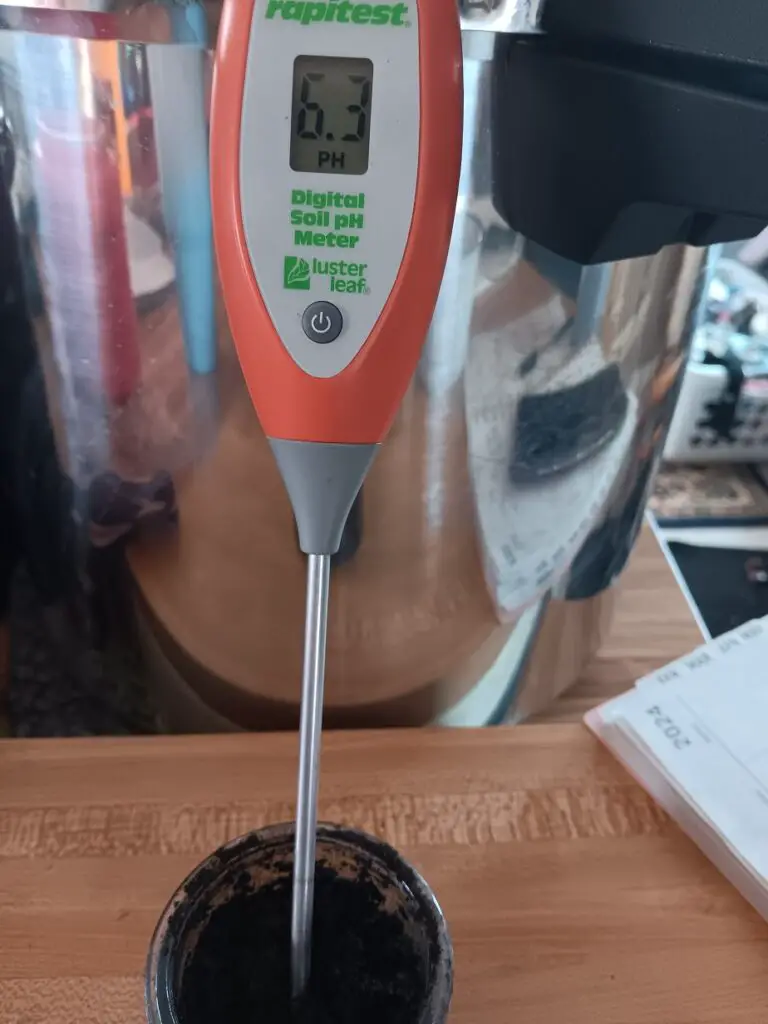
When I make biochar for potting soil, I usually make two different grinds, one fine and one less fine. The finner char works to give fluff to the soil and it mixes well with a sandy or loamy base material. The less-fine char adds some fluss, but also more body and more drainage due to its larger particle sizes.
I will use a much coarser ground biochar than anyone I’ve seen. Usually, I like to have my coarser material around 1/8 to 1/4-inch. But for larger pots, I go bigger. In gallon or larger pots, I may have 1/2-inch pieces of quality softwood biochar mixed into the soil.
As far as just buying the standard finely ground biochar most people sell, You can just add it to your potting mix at five or ten percent of the total volume. If you add three quarts of biochar to one cubic foot of potting mix, you have about 10 percent by volume.
Also, let me state that you really need to test the pH of your char to know if it’s going to be fairly compatible with your specific plants. I would advise against using more than 20 percent biochar in a soil blend unless you are an experienced grower or can consult with someone who is. There are a of of variables at play here.
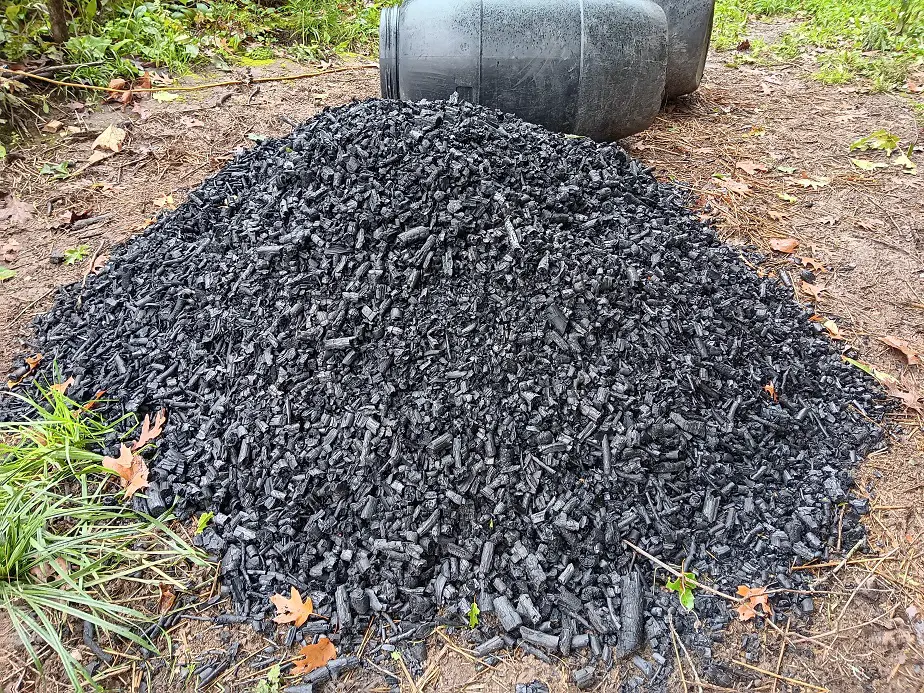
Most internet resources online say 10 percent is the max inclusion rate. It’s not. That’s just a result of all the online bloggers citing each other. After researching and conducting my own tests, I have concluded that depending on your plants, anywhere from 10 to 50 percent is likely ideal and that some plants do well with more thn that. I have been reading about a marigold farmer who grew flowers in a 70% biochar- 30 percent vermiculite potting mix.
For a seed starting mix, I’ll use more of the fine ground char and little of anything much over 1/8 an inch. Seed-starting soils do well with a finer tilth to them. Adding biochar to any soil or growing medium has a tendency to add to soil health and subsequently increase the health, vigor, and resistance of plants.
Most biochar is raw or fertile-neutral. That means it offers little to no macronutrients for plants. It needs to absorb them at some point before it benefits the plants. I either pre-treat my char with a manure, worm casting, and/or compost extract or put it in a bend that’s heavy in rich compost. Adding a lot of raw compost will, in essence, draw out and water down the nutrition of your soil at first.
You either need to pre-treat your char, heavily fertilize the soil after adding char, or wait two years for a positive effect. Once the amended soil has been stabilized, it will be more fertile for well beyond your full lifetime.
Here are articles talking about some of the options I may use to pre-charge my biochar.
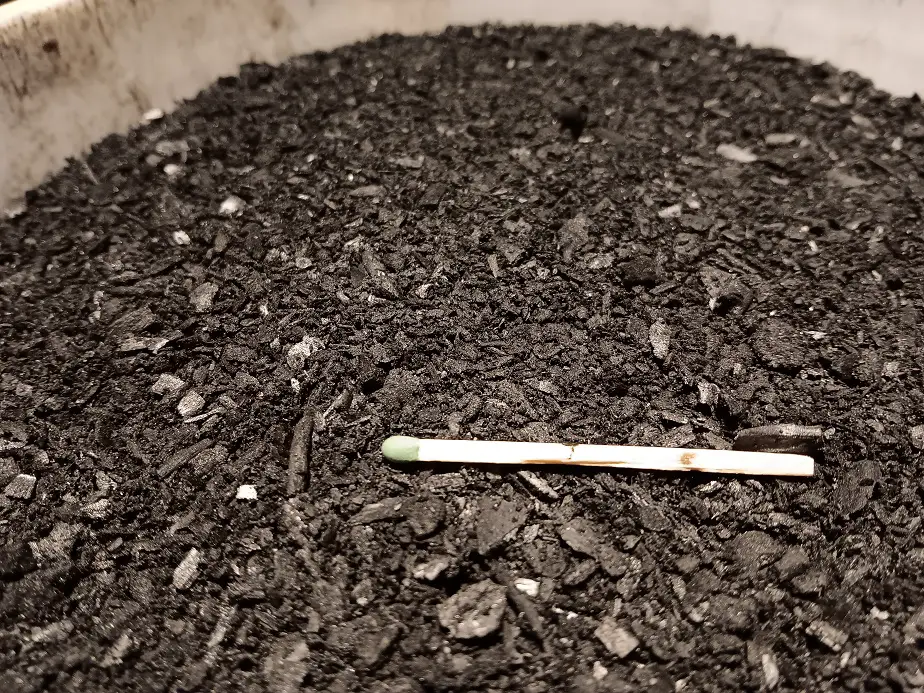
Replacing Peat Moss with Biochar
Biochar has been shown in trials to replace between 10 and 100 percent of peat moss in potting soils and potting blends. It has a higher absorption rate and a lesser aeration rate, but this hasn’t shown any issues. Biochar tends to have a higher pH than peat moss, but even at extreme differences, plants tend to respond well to the substitution of biochar for peat moss.
Last year I completely replaced my peat moss with biochar for general produce starts and for some fruit trees. I didn’t see any visible negatives and the trees seemed to do better. This year I’m going to try including a groud dry leaf liter and biochar combination as a complete replacement for peat moss.
I can get the same texture as I can with peat moss, but it will be less acidic. That’s what I want. Peat moss is around 5.5 pH. My soil is about 6.5 ph. My biochar tends to run between 6.6 and 7.2 pH. By substituting biochar for peat moss, I can get the potting soil pH to a more appropriate pH for most garden plants.
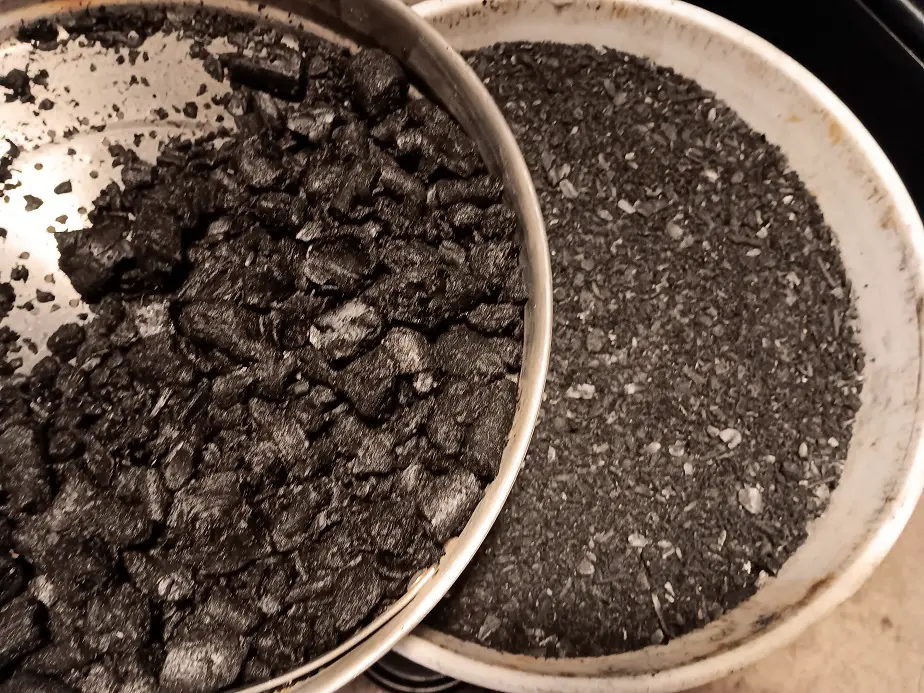
Replacing Perlite with Biochar
Biochar can be a complete substitute for perlite in growing mediums. Biochar can be a replacement for perlite as long as the particle size of the char is matched to that of the perlite. Larger-particulate biochar has the same aeration qualities as perlite and it has higher water-holding capacity. Some growers are replacing perlite with biochar.
Perlite is used in potting soil for two reasons. It’s cheap stuff and it helps improve drainage in soil. there are a thousand other things that also boost drainage in the soil. Biochar can have the exact same drainage-increasing potential as perlite. Plus, when you add biochar, you get all its other benefits.
I would replace perlite with equal parts of biochar of the same granulation. Usually, that’s somewhere between 1/8 and 1/4 inch pieces. My personal biochar favorite includes equal parts 1/4, 1/8, 1/16, and powder. It has all the wonderful properties I want for the very best seed-starting and potting soil.
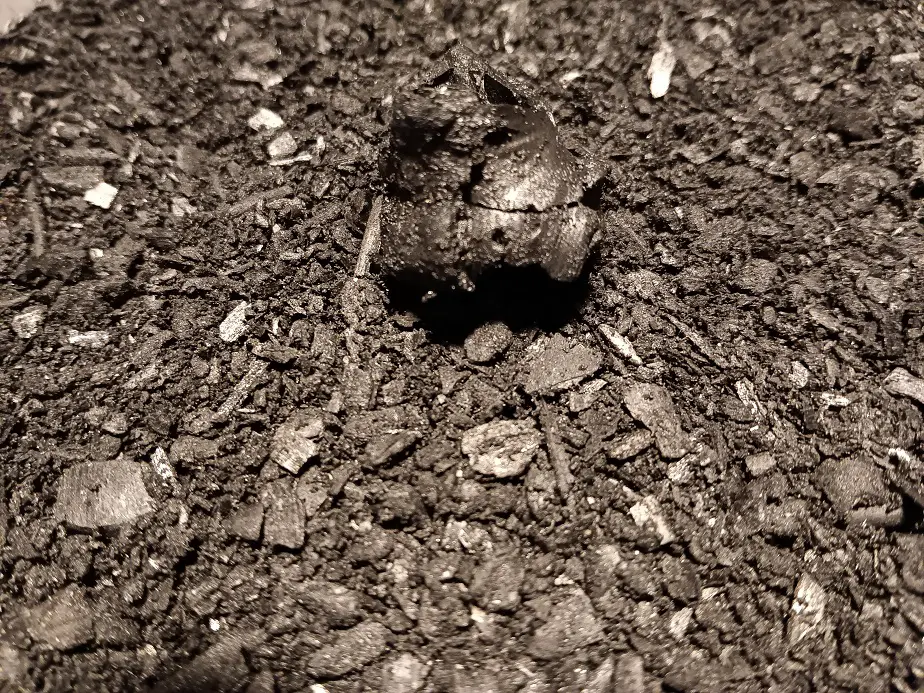
Replacing Vermiculite with Biochar
You can replace vermiculite with biochar. They both have very similar functions in a growing medium. Biochar tends to have more plant-usable minerals than vermiculite. In my experience, biochar holds onto water a bit better than vermiculite. Vermiculite is only common in potting mixes due to its ability to increase the water-holding capacity.
I have never used vermiculite in my blends. I grow pretty good plants. That being said, I do see better growth and higher yields since I started using biochar in my potting soil blends.
So, biochar can effectively replacer every individual ingredient common in commercial potting soil. But I don’t recommend doing that. It’s just too much of one thing if you were to attempt growing plants in just biochar with water and fertilizer. It has been done, but a more diverse growing medium leads to a more healthy microbial soil life and then to better, stronger, healthier plants.
There are a lot of fine ingredients to be had, and many at little or no cost. I’ll give an ingredient list, and some of my recipes.
Biochar Potting Soil Recipies
Here’s the recipes I’ve been using in my systems and that have worked better than name-brand potting soil.
I have some slightly more traditional recipes in this article. Potting Soil vs Garden Soil (differences and DIY recipes)
- Soil for larger pots and raised beds
- One part soil, one part compost, one part blended biochar (ground and unground)
- Two parts soil, one part compost, one part shredded leaves, two parts biochar
- Two parts soil, one part compost, one part woodchips, two parts biochar
- Two parts soil, one part compost, one part aged cow or morse manure, one part biochar
- Soil for smaller pots
- One part soil, one part compost, one part biochar (medium ground)
- Two parts soil, one part finely shredded leaves, two parts compost, two parts medium biochar
- one part soil, one part compost, one part aged rabbit manure, one part medium biochar
- Two parts soil, two parts compost, two parts medium biochar, one part worm castings.
- Seed starting soil
- One part sandy soil, one part compost, one part medium blended biochar (fine and medium ground)
- Two parts sandy soil, two parts compost, two parts blended biochar (fine and medium), one part worm castings
- Adding biochar to any potting soil at 10 percent of the total volume is a common way to boost the soil function for your plants and seedlings.
Hope you learned something here, catch ya later. Bye now.
Related Articles:

